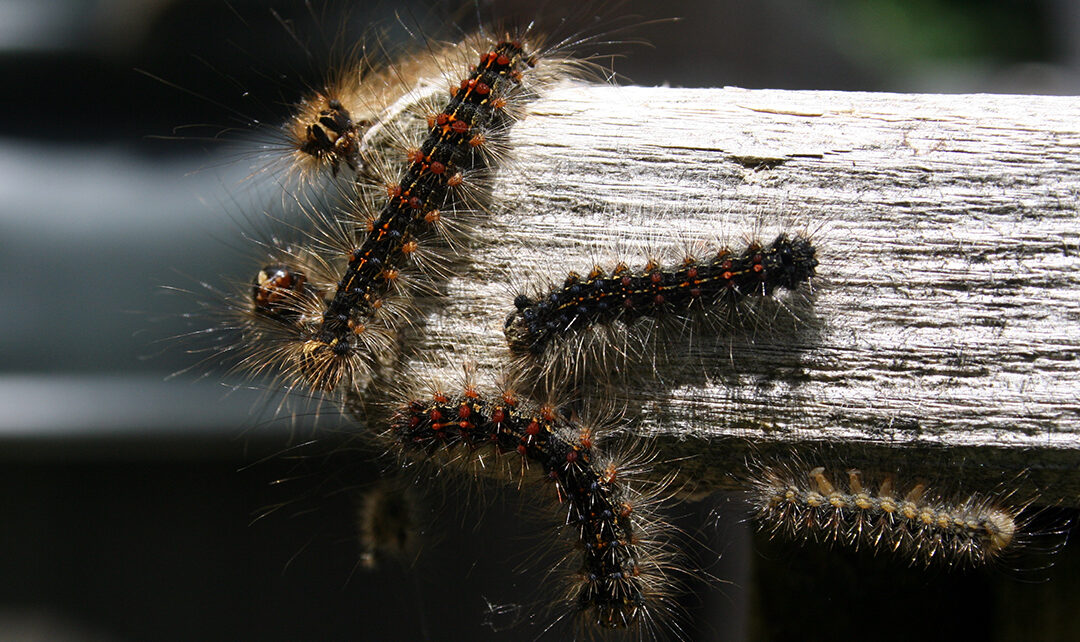Submitted by Seneca Nation Environmental Protection Department
The Environmental Protection Department has seen a recent uptick in messages about gypsy moths, so we would like to give the community an update and provide some useful information.
Aerial spraying for these invasive pests has been conducted in the past, but will not occur this season. Due to the low availability of the proper pesticides and the current stage of larvae, it appears that widespread spraying would be impractical and ineffective.
The moth’s larva stage (caterpillars) will be concluding at the end of the June or early July, when they enter the pupal stage. During this stage they will be encased in a dark brown shell for one to two weeks. When the adult moths emerge they do not feed and will only live for about two weeks while they breed and lay eggs. Before they enter this pupal stage, caterpillars can be controlled with the following methods:
•Tree banding: Using tape and other sticky substances to prevent larvae from climbing trees.
•Manual removal: Wearing gloves, physically remove caterpillars from the tree and then drop them into soapy water or destroy them by other means.
•Pesticide: Bacillus thuringiensis var. kurstaki (BTK) products are natural pesticides which only target caterpillar populations, but must be ingested by the larvae to be effective; so the product must be sprayed on foliage.
You can find various demonstration videos of these methods on the internet but if you would like more information, please contact EPD at (716) 945-1790 ext. 8994.
Gypsy moth outbreaks are difficult to predict and control once they have begun, so we will continue to monitor trends and adapt to prevent future outbreaks. Follow our social media accounts for more information on how you can help stop the next wave of gypsy moths or one of the many other invasive species threatening our environment.




